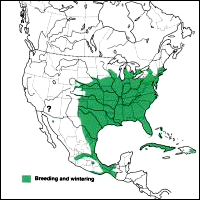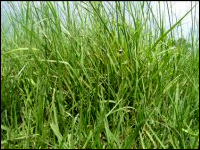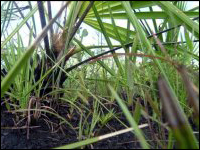- Return to Article Of The Month index
A Basic Primer on the Northern Bobwhite Quail in Native Woods of Florida
March 2006
Jim Selph - Extension Agent IV, CED/Livestock/Forages/Wildlife
Bill Giuliano - Wildlife Extension Specialist
Many of our cattlemen have an interest in maintaining wildlife as a part of their ranches. In some cases that interest is purely for their recreational pleasure. In other cases, it is a means of contributing to the economic vitality of the ranch. This past fall, we conducted the first ever Florida Quail Management Short Course here in Arcadia. The crowd was large indicating the interest in the additional land resource uses that ranchers find to be of value.
The Northern Bobwhite Quail (Colinus virginianus) are a native quail species with an historic breeding and wintering range in 35 states.

Native birds are 9.5 - 10.8" tall and will weigh about 5.8 - 7.3 oz. The further south we go in their range the smaller they will be. Pen-raised birds will normally be heavier, usually do to nutritional influences. They are genetically the same bird, but do not exhibit many of the wild traits necessary for long term survival. Wild birds can reach flight speeds of up to 38 mph.
There are different sub-species of the Northern Bobwhite. In North Florida, we find the Eastern and from about Ocala South the Florida. Other sub-species are the Texas, Mexican, Masked and Plains.
Typically we find about 1 bird to 2.5 acres or 1 covey per 30 acres. An optimal habitat condition would be 1 bird per acre or 1 covey per 12/15 acres. Notice that I used the term optimal and not idea. Higher numbers could be achieved but maintaining those very high numbers is not realistic.
Annual survival of native quail populations is 5-30% a year. Pen-raised birds will usually be less than 1%. In April, the birds will pair and mate. Although some pair bonds are strong, quail are not "strictly" monogamous as originally thought. Both male and female will often mate with other partners. Nests will be built in areas with bunchgrasses ~2 ft tall. The hen will lay a clutch of up to 15 eggs. About 25% of the time, the male will sit on the nest and the hen will attempt to renest. They may do this as many as 3 times up till September. Nest success is often quite low, but because of this renesting; ultimately 70-80% of the hens that live through the summer will produce a successful nest.
After the incubation period of about 23 days, chicks will hatch and death rates are at their highest in the first 30 day period. During the first 14 days they can not thermoregulate their bodies nor can they fly. Survival in the first 30 days will be only 15-30%. Laying hens need a higher protein diet (>24%) and chicks require a diet with 28% protein. This can only be obtained by eating insects. Corn or milo at best might be able to supply 8-12% protein. Ragweed is considered one of the premier plants for providing food. It does provide seed, but the seed will not provide the protein needed by the birds. The ability to attract insects and provide understory habitat is a critical component when it comes to food plant sources for quail.
All in all, it is all about quality habitat when it comes to quail. The makeup of quality habitat will include food, cover, water and space. Within the area of cover, we need nesting, brooding, roosting, escape and thermal (shade). Bare ground is essential as is overhead cover with quality foods.
Fred Guthery has an opening paragraph in his book "Beef, Brush and Bobwhites - Quail Management in Cattle Country" that says:
- "Imagine you're 6 inches tall, weigh 6 ounces and would rather walk than fly. Your view of the world would change. A knee-high shrub would become a small tree, a dense stand of bluestem would become an impassible jungle, a 1-mile jog would telescope into a half marathon".
From a management standpoint, visualizing the needs of the birds is important. Nesting and foraging needs to be close together. The further the chicks must move from the nest to forage the greater the mortality. Quail prefer to nest within 50-75 ft of escape cover. An equal parts of nesting/roosting, escape/thermal, and foraging, with a bit of dusting and water would be a great start to providing a quality habitat.


Bahia Grass Pasture Palmetto & Wiregrass
Consider the two different habitats above and then think of a 10 day old chick that cannot fly. Which of the two habitats will provide a more desirable habitat?
In writing this article, we titled it "A Basic Primer on the Northern Bobwhite Quail in Native Woods of Florida". Our purpose was to get you to thinking about the "basics" that would be needed if you are interested in increasing quail numbers on your ranch. The goal of quality habitat management should be to create what many refer to as the Crazy-Quilt of a landscape. If you are interested in more information you may contact either Jim Selph or Dr. Bill Giuliano.

